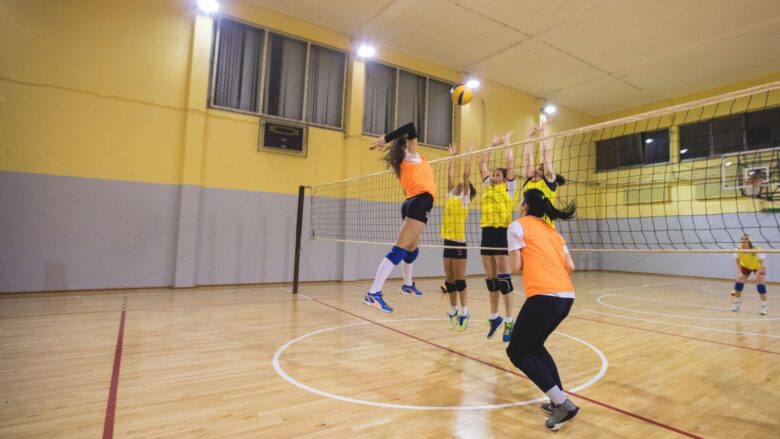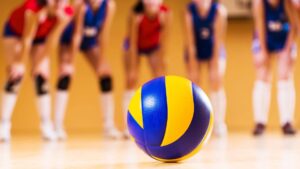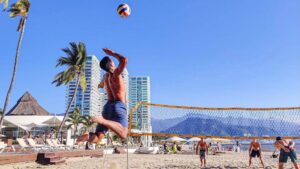1616Every four years, the Olympic Games captivate the world with displays of athletic excellence, unity, and national pride. Among the most thrilling events is Olympic volleyball — both indoor and beach — where lightning-fast rallies, dramatic comebacks, and moments of pure brilliance unfold on the global stage. But what does it really take to make it to the Olympic volleyball court?
In this in-depth article, we explore the journey, commitment, and requirements involved in becoming an Olympic volleyball athlete. From intense qualification systems and demanding training regimens to psychological resilience and global competition, here’s a comprehensive look at what it truly means to compete in volleyball at the Olympics.
The Prestige of Olympic Volleyball
Olympic volleyball is the pinnacle of the sport. Since its indoor debut in 1964 (Tokyo) and beach volleyball’s inclusion in 1996 (Atlanta), these disciplines have grown into global sensations. Olympic medals in volleyball symbolize more than athleticism — they represent years of sacrifice, national honor, and the ability to rise under extreme pressure.
The global reach, competitive standard, and media exposure make the Olympic Games a defining moment in any volleyball player’s career. Athletes become household names, and nations rally around their teams with unmatched passion.
Olympic Volleyball Formats
Indoor Volleyball:
- Teams: 12 teams per gender (Men’s and Women’s)
- Players per team: 12
- Match format: Best of 5 sets (25-point rally scoring)
- Duration: Roughly 1.5 to 2.5 hours per match
- Court dimensions: 18×9 meters
Beach Volleyball:
- Teams: 24 pairs per gender
- Match format: Best of 3 sets (21-21-15 scoring system)
- Court surface: Sand (16×8 meters)
- Atmosphere: Open-air, festival-like environment
Both formats require exceptional athleticism, adaptability, and mental strength. Indoor games emphasize team coordination and structured systems, while beach volleyball demands all-around versatility from just two players per side.
The Qualification Process
Indoor Volleyball:
Teams qualify for the Olympics through a combination of:
- FIVB World Rankings
- Olympic Qualification Tournaments (OQTs)
- Continental Qualifiers (e.g., NORCECA, AVC, CEV, CSV, CAVB)
- Host nation automatic berth
Example: For Paris 2024, six teams qualified via OQTs, five through continental rankings, and one as host (France).
Beach Volleyball:
Qualification is based on:
- FIVB World Rankings (top 17 pairs)
- Continental Cup Winners
- Host nation quota
- Wild cards (limited)
Unlike indoor, beach volleyball is individual-based per pair, not national team selection. This makes rankings and point accumulation even more critical. Consistency across several seasons is key to qualifying.
The Physical Demands
Key Physical Attributes:
| Attribute | Indoor Players | Beach Players |
|---|---|---|
| Vertical Jump | Extremely important for spiking and blocking | Critical due to deeper sand surface |
| Endurance | High — long matches and tournaments | Very high — fewer substitutions |
| Agility & Speed | Court movement and transition | Sand mobility and reaction speed |
| Strength & Power | Explosive for serves, attacks | Total-body control and stamina |
Olympic players must meet elite benchmarks in strength, reaction time, coordination, and injury prevention. Conditioning typically includes:
- Weight training
- Plyometrics
- Core and balance exercises
- Recovery protocols (ice baths, massage, sleep optimization)
- Sports-specific movement training (cutting, diving, sliding)
Many national teams employ full-time physical therapists and performance scientists to monitor and maximize athletic output.
Technical and Tactical Mastery
At the Olympic level, players need to execute advanced techniques with near perfection.
Indoor:
- Mastery of systems like 5-1 or 6-2 rotations
- High-speed offense and back-row attacks
- Reading opposing blocks and adjusting shots
- Elite serve and serve-receive efficiency
Beach:
- Shot selection and placement are critical (e.g., cut shots, jumbo pokes)
- Block-defense synchronization between only two players
- Mastery of hand setting, jump serving, and situational strategies
- Adaptation to wind, sun, and environmental variables
Teams spend years refining their tactics through scouting, video analysis, and match simulations. Many Olympic players log over 1,000 match hours in preparation.
The Mental Game
The Olympic stage brings immense psychological pressure — representing your country in front of millions can unnerve even seasoned professionals.
Key Mental Skills:
- Emotional regulation
- Focus and concentration during high-stress points
- Resilience after errors or controversial calls
- Visualization and positive self-talk
- Team communication and chemistry
Athletes often work with sports psychologists to prepare mentally for the games, including breathing techniques, meditation, and cognitive behavioral strategies.
Preparation also involves managing media scrutiny, navigating crowd noise, and handling expectations from home countries. The mental aspect of Olympic competition can be the difference between a podium finish and early elimination.
National Team Selection
Indoor:
Players are selected by national federations, typically through:
- National training camps
- Domestic league performance
- International club play visibility
- Coach’s system compatibility and versatility
- Statistical performance tracking and positional needs
Beach:
Players choose their own partners, but must:
- Register as a team on the FIVB Tour
- Accumulate points over multiple seasons
- Maintain ranking consistency under pressure
- Show proven chemistry and tournament success
There’s no formal “tryout” — selection is merit-based through performance, statistics, and consistency.
Life in the Olympic Village
For athletes, competing at the Olympics isn’t just about the court — it’s about embracing the entire experience:
- Living with thousands of elite athletes from around the world
- Managing media obligations and interviews
- Navigating anti-doping procedures
- Adhering to team schedules and curfews
- Coping with downtime and rest management
- Sharing meals, training facilities, and cultural exchanges
Athletes often describe it as “intense, inspiring, and surreal.” The sense of unity, camaraderie, and international respect makes the Olympic Village an unforgettable part of the journey.
Past Legends and Inspirational Stories
Olympic volleyball has been a stage for unforgettable stories:
- Kerri Walsh Jennings & Misty May-Treanor: Three consecutive beach volleyball golds (2004, 2008, 2012).
- Cuban Women’s National Team (1990s): Dominated with physicality and flair, winning three straight gold medals.
- USA Men’s Team (1984, 1988): Transformed the sport with power and modern systems.
- Brazilian Indoor Teams: Multiple medals across both men’s and women’s events, inspiring generations.
- Ana Paula Henkel (Brazil): Competed in both indoor and beach volleyball — a rare Olympic dual-discipline athlete.
These stories show that Olympic greatness is about persistence, evolution, and seizing the moment.
Training Timeline: From Dream to Olympic Court
| Stage | Timeline | Milestones |
|---|---|---|
| Youth & Junior Level | Ages 12–17 | Club success, national U18 team trials |
| Collegiate/Professional | Ages 18–24 | NCAA/club performance, scouting for national team |
| National Team Integration | Ages 20–26 | Participation in World League, VNL, or Continental events |
| Olympic Selection | Final 6–12 months | Training camps, pre-Olympic tours, performance in friendlies |
This timeline varies globally, especially in countries without structured collegiate systems. In many nations, players go pro as teenagers and enter the national team by age 19 or 20.
How Fans Can Support Olympic Volleyball
- Watch matches on official Olympic and FIVB platforms
- Follow national team progress during qualifiers
- Engage on social media with athletes and teams
- Learn the rules and strategies to better appreciate the game
- Encourage young players by sharing stories of Olympic journeys
- Purchase official merchandise to support federations
Your support helps grow the sport globally and inspires future Olympians.
Final Thoughts
Competing in volleyball at the Olympic Games is one of the highest honors in the sport — and one of the most challenging journeys an athlete can undertake. It requires technical brilliance, physical supremacy, mental strength, and years of commitment to excellence.
Whether you’re a rising player, an avid fan, or simply someone who appreciates world-class sport, understanding what it takes to reach the Olympic court deepens your appreciation for every serve, dive, and celebration we witness on the biggest stage.
Behind every Olympic point lies a lifetime of preparation. And for those who earn their place under the rings, the journey itself is as golden as the medal.
Explore More:
- Learn about The Most Intense Rivalries in Volleyball History



